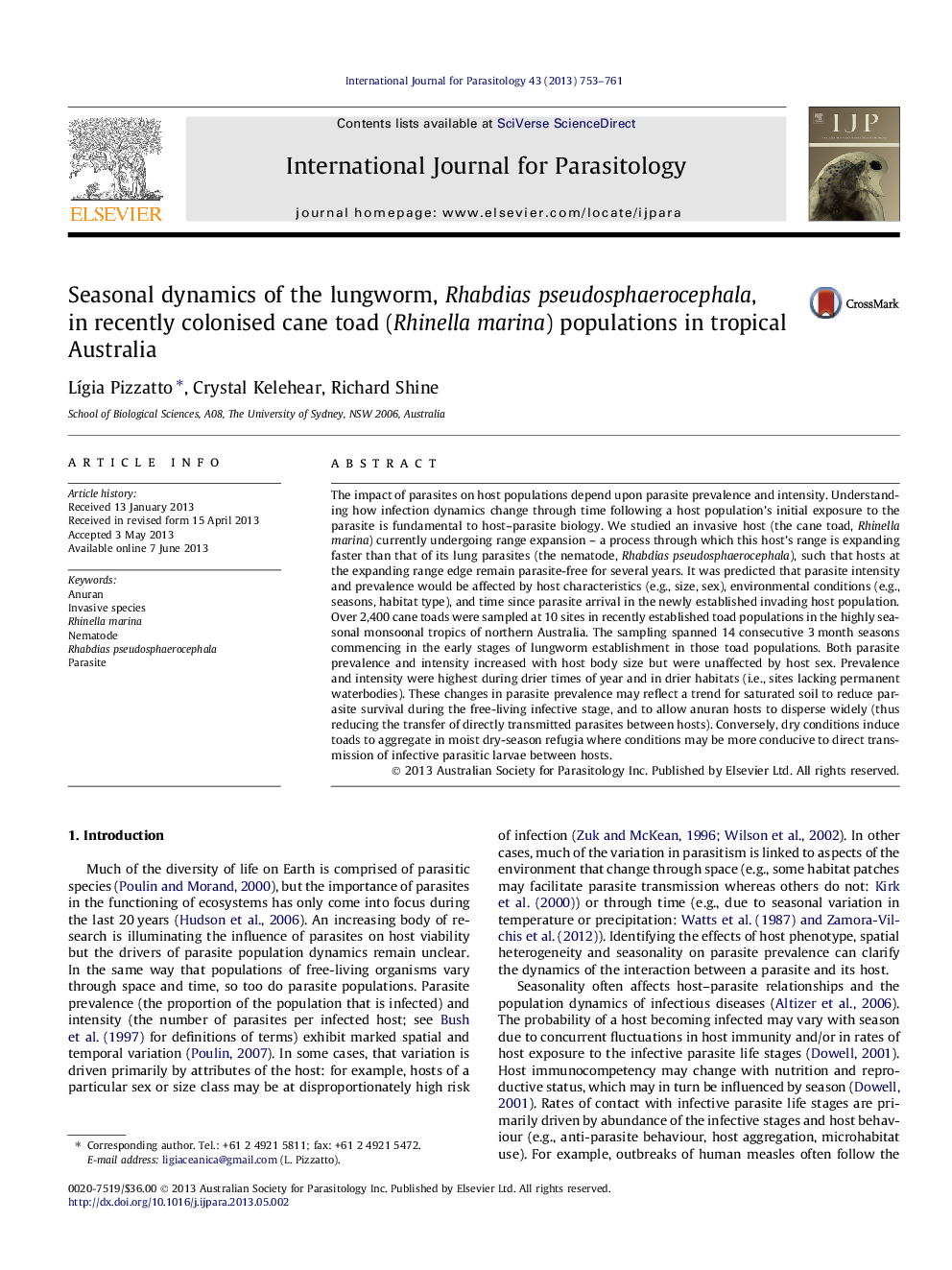| کد مقاله | کد نشریه | سال انتشار | مقاله انگلیسی | نسخه تمام متن |
|---|---|---|---|---|
| 2436068 | 1107267 | 2013 | 9 صفحه PDF | دانلود رایگان |

• Three year sampling of toad lungworms in sites at an invasion front.
• Parasite prevalence and intensity increased with host body size but not host sex.
• Prevalence and number of parasites increased with time since colonization.
• Prevalence and intensity were highest at drier times of year and in drier habitats.
• Dry conditions may induce host aggregation and thus facilitate infection of new hosts.
The impact of parasites on host populations depend upon parasite prevalence and intensity. Understanding how infection dynamics change through time following a host population’s initial exposure to the parasite is fundamental to host–parasite biology. We studied an invasive host (the cane toad, Rhinella marina) currently undergoing range expansion – a process through which this host’s range is expanding faster than that of its lung parasites (the nematode, Rhabdias pseudosphaerocephala), such that hosts at the expanding range edge remain parasite-free for several years. It was predicted that parasite intensity and prevalence would be affected by host characteristics (e.g., size, sex), environmental conditions (e.g., seasons, habitat type), and time since parasite arrival in the newly established invading host population. Over 2,400 cane toads were sampled at 10 sites in recently established toad populations in the highly seasonal monsoonal tropics of northern Australia. The sampling spanned 14 consecutive 3 month seasons commencing in the early stages of lungworm establishment in those toad populations. Both parasite prevalence and intensity increased with host body size but were unaffected by host sex. Prevalence and intensity were highest during drier times of year and in drier habitats (i.e., sites lacking permanent waterbodies). These changes in parasite prevalence may reflect a trend for saturated soil to reduce parasite survival during the free-living infective stage, and to allow anuran hosts to disperse widely (thus reducing the transfer of directly transmitted parasites between hosts). Conversely, dry conditions induce toads to aggregate in moist dry-season refugia where conditions may be more conducive to direct transmission of infective parasitic larvae between hosts.
Figure optionsDownload high-quality image (137 K)Download as PowerPoint slide
Journal: International Journal for Parasitology - Volume 43, Issue 9, August 2013, Pages 753–761